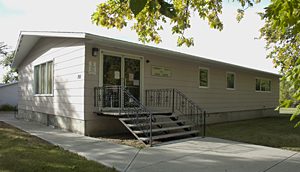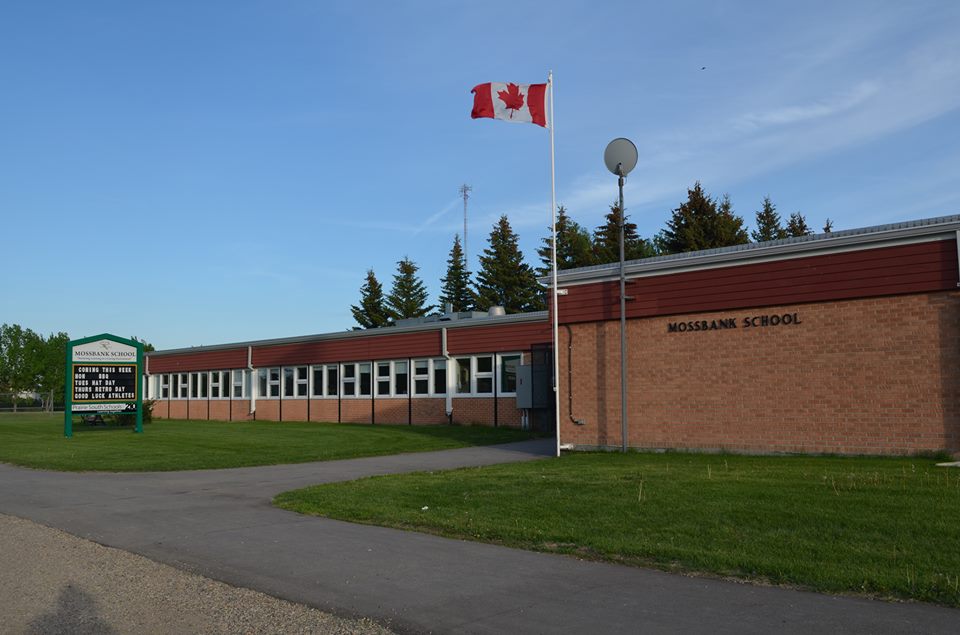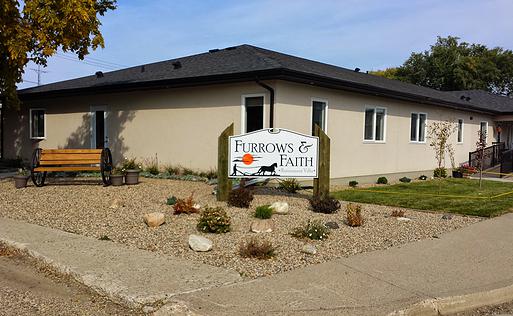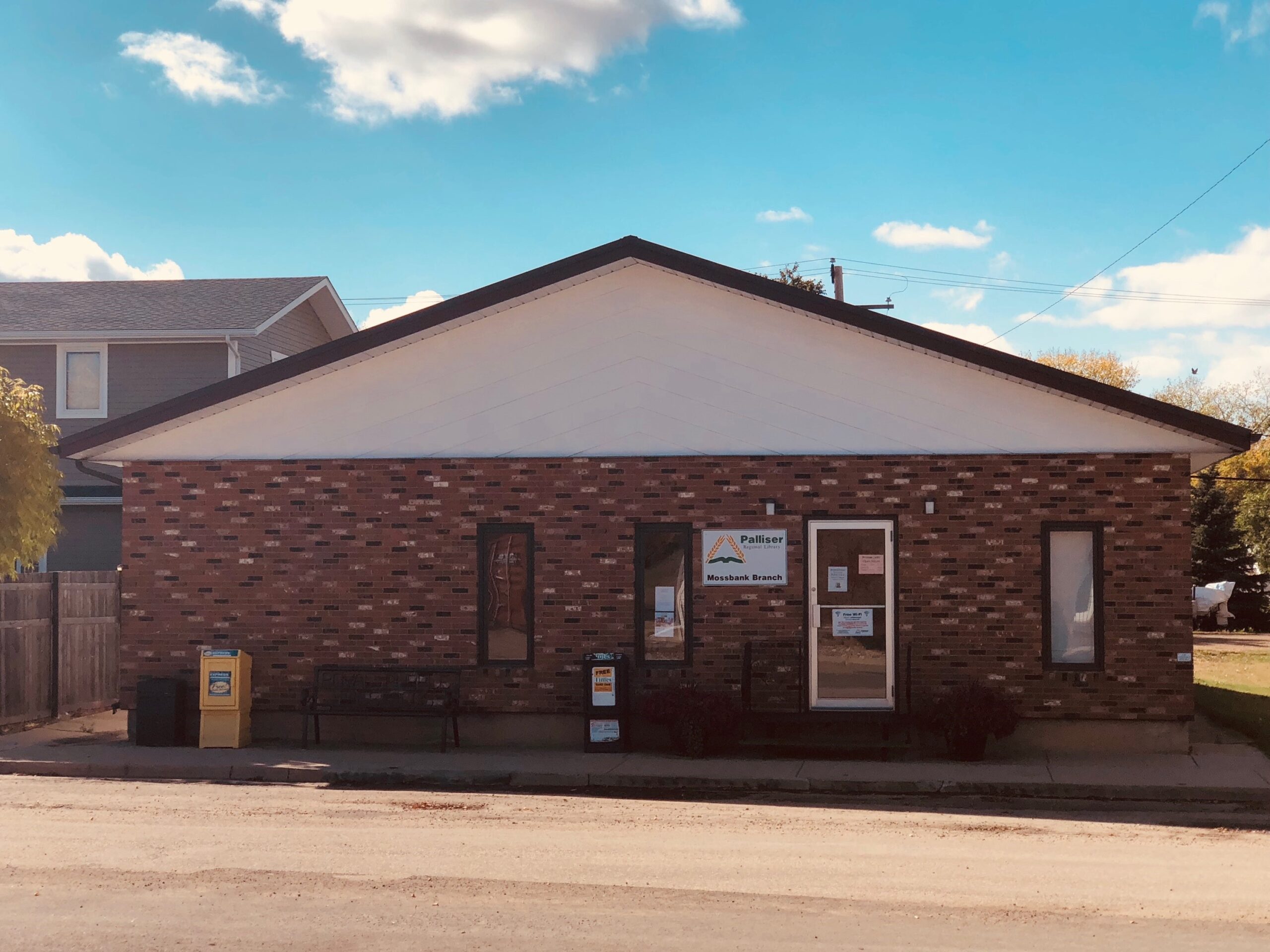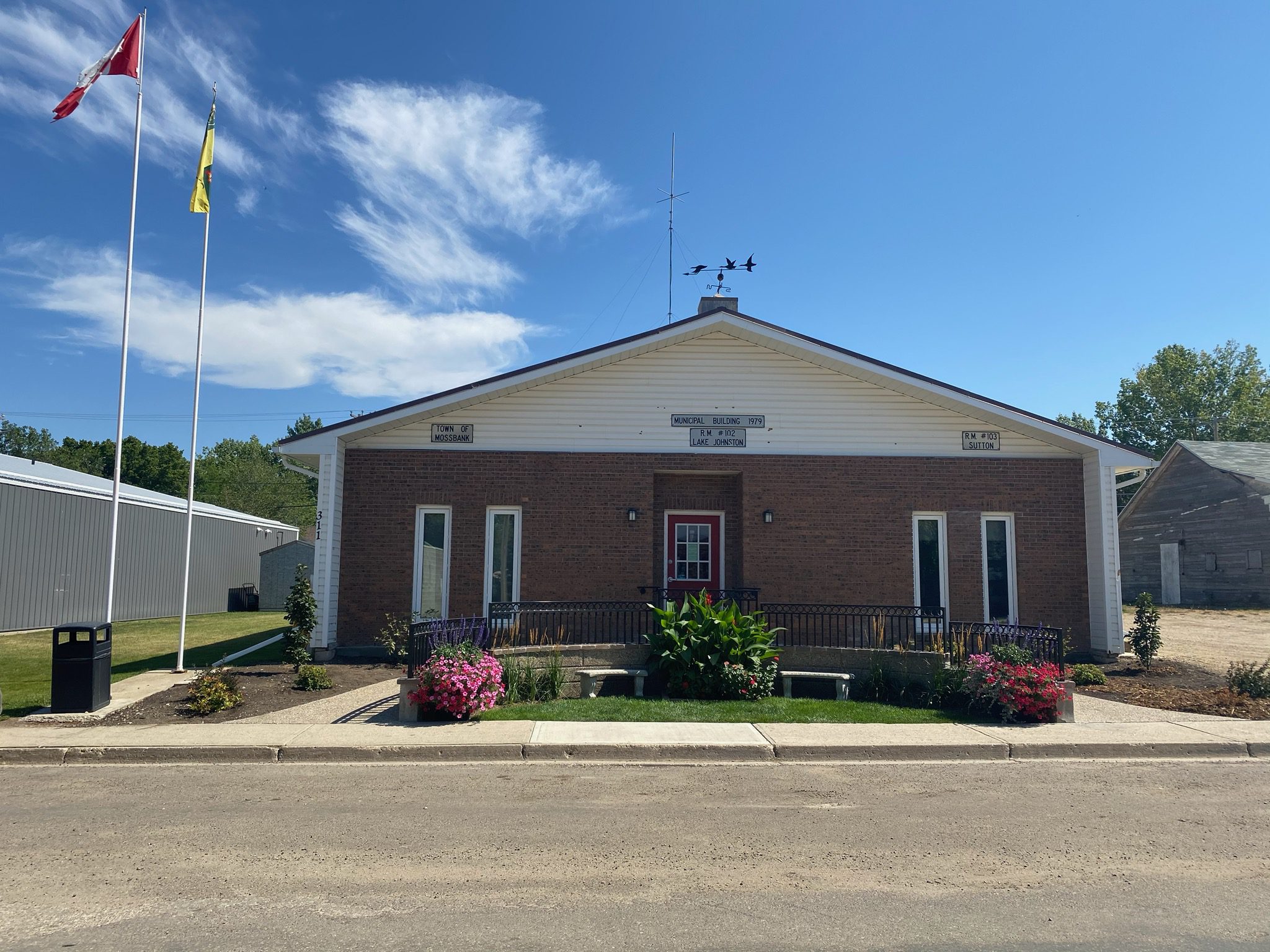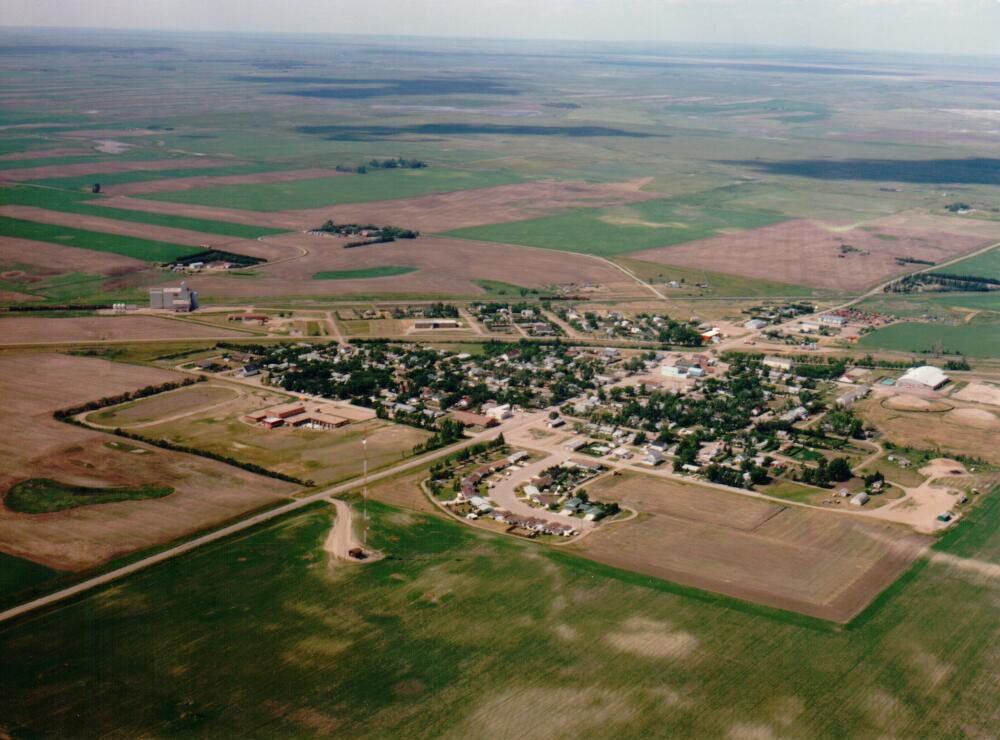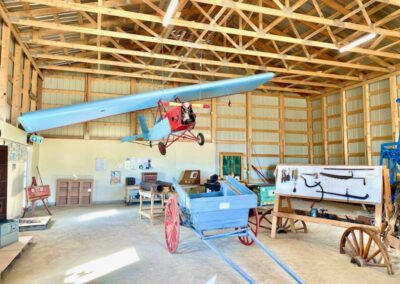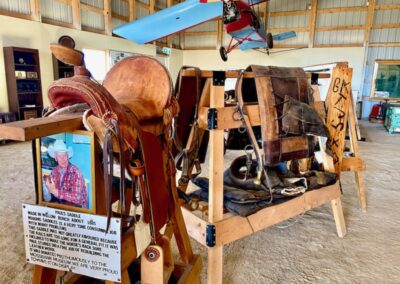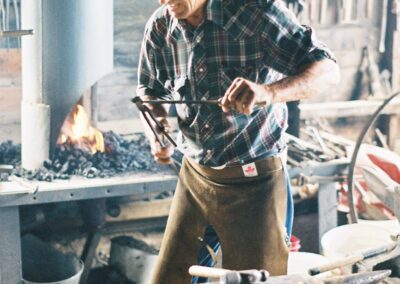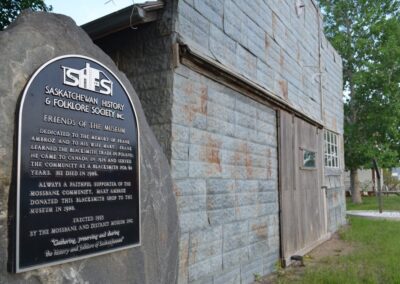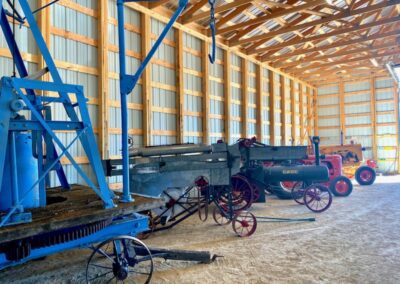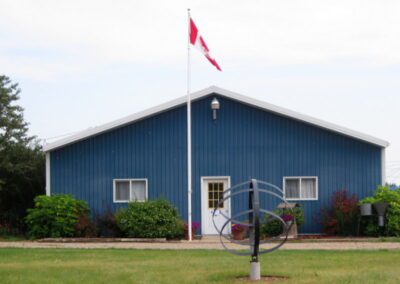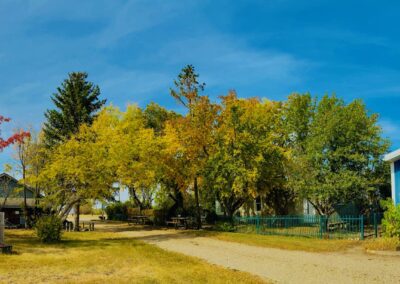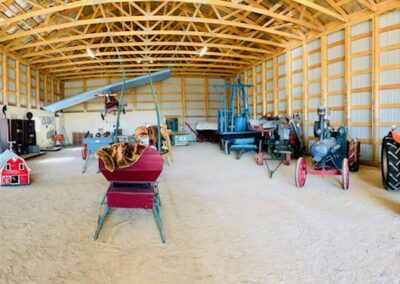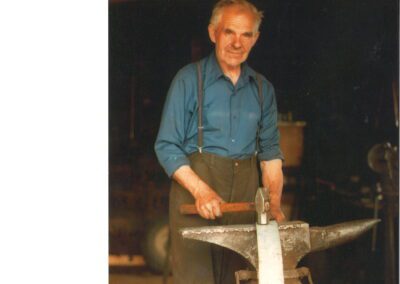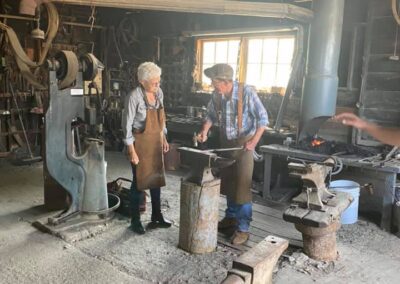Visitors
Join the Fun in Mossbank!
Mossbank’s many events and attractions draw visitors from all over Western Canada and beyond every year. The district’s colourful history provides the background for tours related to the North West Mounted Police’s March West, the British Commonwealth Air Training Plan Base and the 1957 Debate between Tommy Douglas and Ross Thatcher. Other tours feature nearby Old Wives Lake, which as a national bird sanctuary provides a bird watcher’s paradise.
Rich in history, Mossbank’s features a museum and an authentic blacksmith shop, which is a provincial heritage site. The Ambroz Blacksmith Shop was one of the last businesses of this type to operate in Western Canada. Every summer, the Museum and Mossbank Tourism host the Old Wives Lake Festival where modern blacksmiths provide demonstrations. In August every year, the Museum holds Apple Pie Days. Mouthwatering fresh homemade pies and other country fair are available for purchase – so come early because it sells out every year!
Mossbank is located in Saskatchewan, Canada in close proximity to many other places:
- 65 kilometres south of Moose Jaw
- 30 kilometres north of Assiniboia
- 120 kilometres south of Regina, the provincial capital
- 135 kilometres north of the United States Border Crossing
- Mossbank is within the boundaries of the Rural Municipality of Lake Johnston No. 102.
To see Mossbank on a map, please view this link
The global coordinates for the approximate centre of Mossbank are 49:56:18 N (49.9382) Latitude and 105:57:53 W (-105.9646) Longitude.
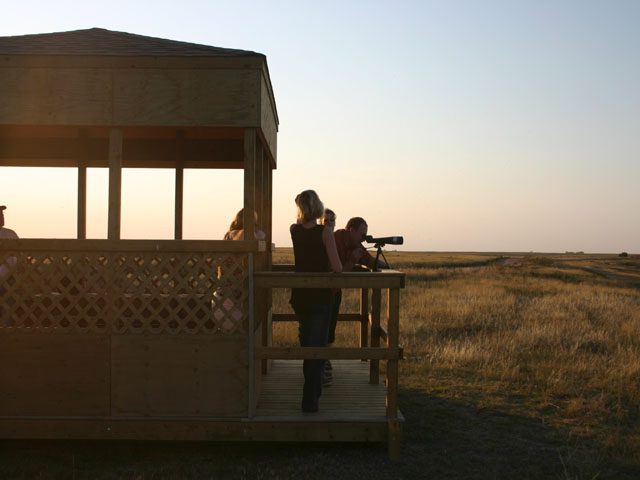
Birdwatching
Come experience the breathtaking serenity of Old Wives Lake. This newly developed nature area, set along the south shore of Old Wives Lake, has a 2.4 km walking trail, a double viewfinder, a lookout deck, a gazebo and picnic areas.
The combination of abundant wetlands and the vicinity of Old Wives Lake and Lake of the Rivers makes the Mossbank district a bird watcher’s paradise! Old Wives Lake is a Federal Migratory Bird Sanctuary and an important breeding and moulting area for both dabbling and diving ducks, and small numbers of Canada Geese.
Mossbank & District Museum
The Mossbank and District Museum is recognized as one of the best local museums in Saskatchewan. This status is further enhanced by the Ambroz Blacksmith Shop and Residence Provincial Heritage Property, which is an integral part of the Museum.
Built around the former property of Frank and Mary Ambroz, the Museum is a complex of six principal buildings and grounds featuring several smaller buildings and antique machinery. Frank Ambroz immigrated to Mossbank from Poland in 1926 and in 1928 purchased a Blacksmith Shop, which had been built in 1920. Frank worked in this shop as a Blacksmith until his death in 1986. In 1988, Mary donated the Blacksmith Shop to the Museum, and shortly thereafter they moved their operations to the Ambroz’s former residence.
All the museum’s exhibits and artifacts are lovingly maintained by the Museum Committee who dedicate countless hours to their upkeep. The Museum receives support through Saskatchewan Lotteries and the Museum Association of Saskatchewan, but the Museum also depends heavily on local support. Its most famous fundraiser is the annual Apple Pie Day celebration. It began with the apples grown on trees that are part of the original Ambroz property, nowadays the pies are made and donated by the community. Not surprisingly, this is their best fundraiser each year as these homemade pies are always a big hit!
The Ambroz Blacksmith Shop is the only remaining blacksmith shop in Saskatchewan that is on its original site and that contains most of its original tools in working condition. The Museum board was able to document these facts and in 2004 and after more than a decade the provincial government agreed to designate the Shop as a Provincial Heritage Property. This designation is very significant as there are only 40 other properties recognized as such in Saskatchewan. Most of these are large expensive buildings built by governments or banks, but the Ambroz Property acknowledges the contributions of ordinary citizens.
Years prior to the provincial designation, the Museum initiated annual Blacksmith Days on July 1. During this celebration, a modern Blacksmith provides demonstrations using Frank’s original equipment. Modern blacksmiths also often participate on other special days and during community events.
The Ambroz residence now houses an extensive collection of antiques and displays from the local area. This includes quilts, wedding dresses, china, furniture and appliances some of which are nearly one hundred years old. The Museum has moved two former one-room schoolhouses onto the Ambroz property. One showcases the experiences of students and teachers in the early settlement era, while the other highlights the histories of the smaller communities around Mossbank. For the most part these centers, Ardill, Expanse, Mitchellton, Dunkirk, Ettington and Vantage, no longer exist.
The fifth structure, the Heritage Building, was built in the 1990s and includes some of the Museum’s largest displays and artifacts. Two large murals dominate the building. The first is an accurate representation of the No. 2 Bombing and Gunnery School, which was located near Mossbank between 1940 and 1944 as part of the British Commonwealth Air Training Plan. The building stores a large collection of documents from the school as well as some displays of artifacts and uniforms from the base. The second mural represents the prairie around Old Wives Lake. The museum has collected a number of tools used by First Nations peoples around the Lake prior to European contact and these are spotlighted in the Heritage Building. One of the most eye-catching exhibits centers on a small airplane that is suspended from the roof. The plane was designed, built and flown by a local farmer, Cecil Goddard. Goddard built over a dozen different aircraft and flew them all with varying degrees of success. Some of his planes have been displayed in major airports and aviation museums, others, however, crashed with Goddard in them! Amazingly, despite his somewhat shaky flight record, Goddard emerged unscathed from every crash.
For those who wish to sit back, there is now a reading room with plenty of newspapers and history in the Ambroz house that can be viewed at any time.
The Mossbank Museum is open by appointment only during the off-season. To book group tours or arrange time in the reading room to do research, please contact one of the following board members.
Joan Bumphrey 306-354-7469
Ken Kirkpartick 306-640-5205
Mossbank & District Museum
The Mossbank and District Museum is recognized as one of the best local museums in Saskatchewan. This status is further enhanced by the Ambroz Blacksmith Shop and Residence Provincial Heritage Property, which is an integral part of the Museum.
Built around the former property of Frank and Mary Ambroz, the Museum is a complex of six principal buildings and grounds featuring several smaller buildings and antique machinery. Frank Ambroz immigrated to Mossbank from Poland in 1926 and in 1928 purchased a Blacksmith Shop, which had been built in 1920. Frank worked in this shop as a Blacksmith until his death in 1986. In 1988, Mary donated the Blacksmith Shop to the Museum, and shortly thereafter they moved their operations to the Ambroz’s former residence.
All the museum’s exhibits and artifacts are lovingly maintained by the Museum Committee who dedicate countless hours to their upkeep. The Museum receives support through Saskatchewan Lotteries and the Museum Association of Saskatchewan, but the Museum also depends heavily on local support. Its most famous fundraiser is the annual Apple Pie Day celebration. It began with the apples grown on trees that are part of the original Ambroz property, nowadays the pies are made and donated by the community. Not surprisingly, this is their best fundraiser each year as these homemade pies are always a big hit!
The Ambroz Blacksmith Shop
The Ambroz Blacksmith Shop is the only remaining blacksmith shop in Saskatchewan that is on its original site and that contains most of its original tools in working condition. The Museum board was able to document these facts and in 2004 and after more than a decade the provincial government agreed to designate the Shop as a Provincial Heritage Property. This designation is very significant as there are only 40 other properties recognized as such in Saskatchewan. Most of these are large expensive buildings built by governments or banks, but the Ambroz Property acknowledges the contributions of ordinary citizens.
Years prior to the provincial designation, the Museum initiated annual Blacksmith Days on July 1. During this celebration, a modern Blacksmith provides demonstrations using Frank’s original equipment. Modern blacksmiths also often participate on other special days and during community events.
Other Buildings
The Ambroz residence now houses an extensive collection of antiques and displays from the local area. This includes quilts, wedding dresses, china, furniture and appliances some of which are nearly one hundred years old. The Museum has moved two former one-room schoolhouses onto the Ambroz property. One showcases the experiences of students and teachers in the early settlement era, while the other highlights the histories of the smaller communities around Mossbank. For the most part these centers, Ardill, Expanse, Mitchellton, Dunkirk, Ettington and Vantage, no longer exist.
The fifth structure, the Heritage Building, was built in the 1990s and includes some of the Museum’s largest displays and artifacts. Two large murals dominate the building. The first is an accurate representation of the No. 2 Bombing and Gunnery School, which was located near Mossbank between 1940 and 1944 as part of the British Commonwealth Air Training Plan. The building stores a large collection of documents from the school as well as some displays of artifacts and uniforms from the base. The second mural represents the prairie around Old Wives Lake. The museum has collected a number of tools used by First Nations peoples around the Lake prior to European contact and these are spotlighted in the Heritage Building. One of the most eye-catching exhibits centers on a small airplane that is suspended from the roof. The plane was designed, built and flown by a local farmer, Cecil Goddard. Goddard built over a dozen different aircraft and flew them all with varying degrees of success. Some of his planes have been displayed in major airports and aviation museums, others, however, crashed with Goddard in them! Amazingly, despite his somewhat shaky flight record, Goddard emerged unscathed from every crash.
Visit the Museum
For those who wish to sit back, there is now a reading room with plenty of newspapers and history in the Ambroz house that can be viewed at any time.
The Mossbank Museum is open by appointment only during the off-season. To book group tours or arrange time in the reading room to do research, please contact one of the following board members.
Joan Bumphrey 306-354-7469
Ken Kirkpartick 306-640-5205
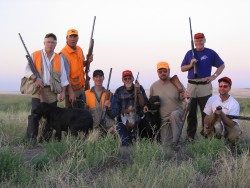
Hunting
Every fall, Mossbank’s great waterfowl hunting area attracts hunters from all over North America. They are drawn by the community’s position on the major routes of migratory birds – not to mention the unbeatable small-town hospitality.
Ducks, geese, Hungarian partridges, pheasants and sharptail grouse are among the game birds commonly found in the Mossbank district.
Geocaching
Geocaching is a real-world, outdoor treasure hunting game using GPS-enabled devices. Participants navigate to a specific set of GPS coordinates and then attempt to find the geocache (container) hidden at that location. To learn more and get started, go to geocaching.com/guide/.
In the summer of 2018, Old Wives Lake Festival received a grant to purchase geocache equipment.
What is Geocaching? Watch this video!
Blog: 15 reasons to love geocaching!
Sign up here: https://www.geocaching.com/play
Local map link: http://coord.info/map?ll=49.95674,-105.99953&z=12


